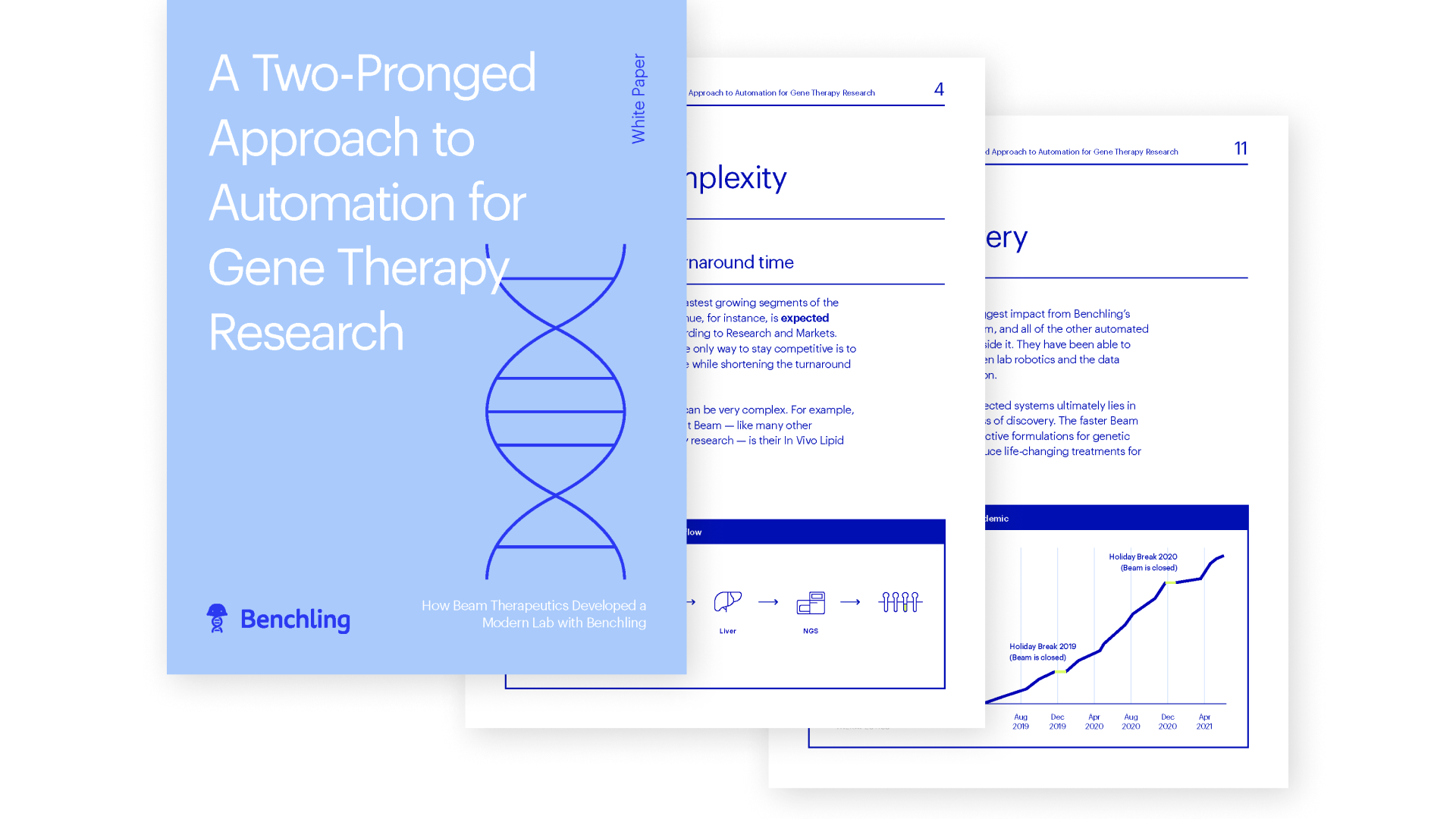White paper
A Two-Pronged Approach to Automation for Gene Therapy Research
The field of cell and gene therapy is exploding, thanks in large part to the Nobel Prize-winning gene editing technology, the CRISPR-Cas9 system. Beam Therapeutics, a biotech company developing a new class of genetic medicines, uses similar technology, but using a more precise, higher efficiency approach. To achieve their goal of treating genetic diseases caused by point mutations, Beam scientists needed a fully automated data pipeline to support complex and demanding research.
In this white paper, we cover:
The challenges associated with high-throughput gene therapy discovery
How robotics and data automation work hand in hand to with Benchling
The impact of Benchling on faster, more reliable discovery
Join over 200,000 scientists using Benchling to power their biotech R&D

